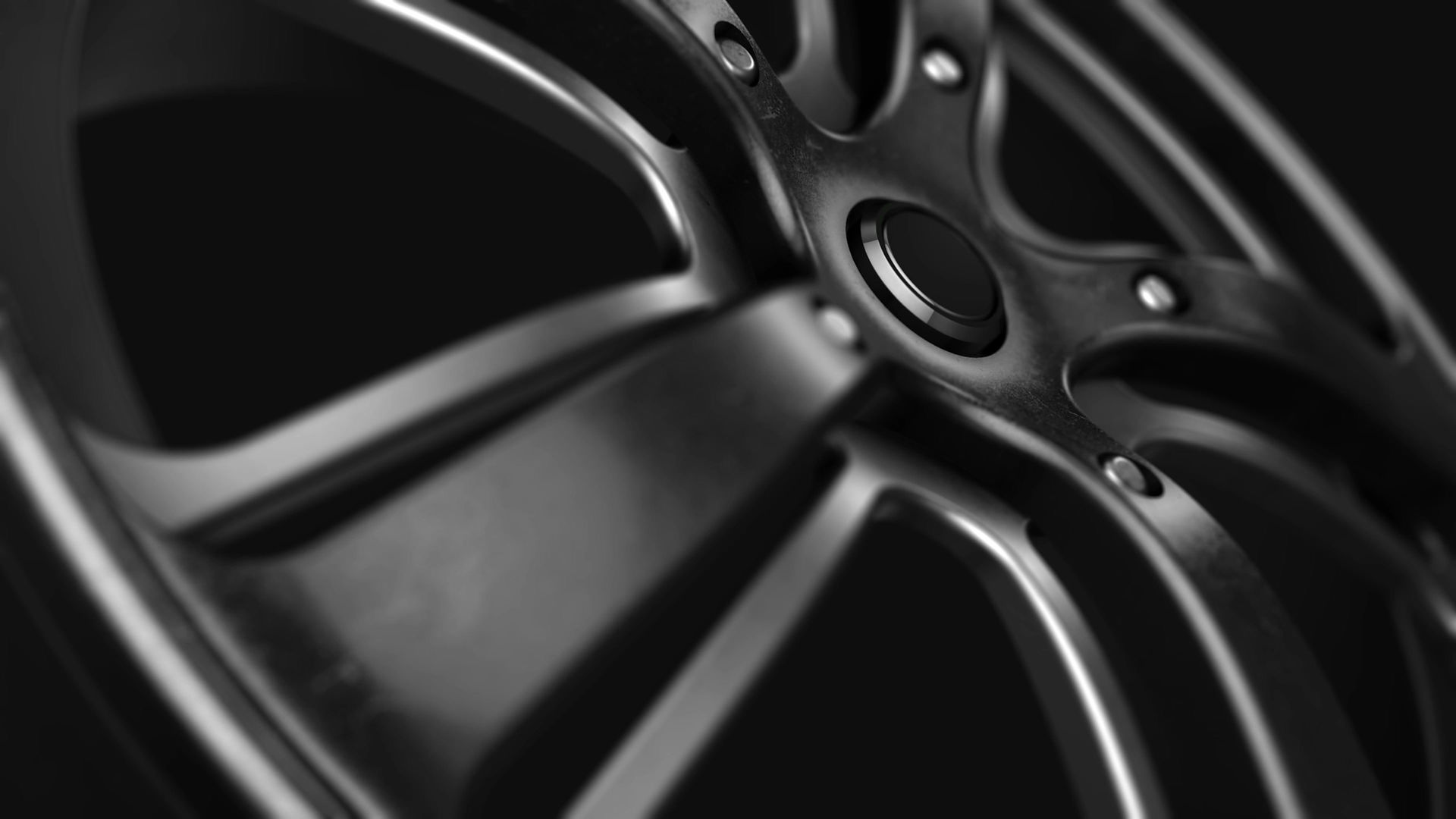Fitment Guide.
- Jimmy S.

- May 21, 2023
- 7 min read
Updated: Aug 12, 2023

Mastering Auto Wheel Fitment and Stance: A Comprehensive Guide
Introduction:
Upgrading your vehicle's wheels is an exciting way to enhance its appearance and performance. However, understanding auto wheel fitment and stance can be complex. In this blog post, we will provide an in-depth explanation of ride height, offsets, wheel size, spacers, tire size, and lug patterns. We will also include diagrams and images to help you visualize these concepts, along with links to top-rated and popular resources for a comprehensive guide to wheel and rim fitment.
1. Ride Height:
Ride height refers to the distance between the ground and the lowermost point of your vehicle's body. It plays a vital role in determining the overall stance and clearance. Modifying the ride height can impact wheel fitment and visual appeal. Lowering the ride height improves aesthetics and lowers the vehicle's center of gravity for better handling. On the other hand, raising the ride height can provide additional ground clearance for off-road purposes or accommodate larger wheels and tires.
2. Wheel Offsets:
Wheel offset is the distance between the wheel's mounting surface and its centerline. It determines how the wheel sits within the wheel well and affects the stance of your vehicle. Understanding positive, negative, and zero offsets is crucial:
- Positive Offset: The mounting surface is closer to the wheel's outer edge, pushing the wheel towards the vehicle's body. This configuration is commonly found in factory-installed wheels and provides better clearance for suspension components.
- Negative Offset: The mounting surface is closer to the wheel's inner edge, causing the wheel to extend further outward. This setup offers a more aggressive stance and allows for wider wheels or tires. However, it may increase the risk of rubbing against fenders or suspension parts.

3. Wheel Size:
Wheel size refers to the diameter and width of the wheel. Choosing the right wheel size is crucial for proper fitment and performance. Here are the key considerations:
- Diameter: Increasing the wheel diameter enhances the visual appeal and fills out the wheel well. However, it can impact ride quality, acceleration, and braking performance. Lower-profile tires are usually required for larger diameter wheels.
- Width: Wider wheels provide a broader contact patch, which improves grip and handling. However, excessively wide wheels may require modifications to fenders, suspension, and steering components. It is essential to balance aesthetics and practicality when selecting wheel width.
4. Spacers:
Wheel spacers are devices installed between the wheel hub and the wheel, effectively pushing the wheel further outwards. They are used to improve wheel fitment, create a wider stance, or compensate for incorrect offsets. It is crucial to choose high-quality spacers designed for your specific vehicle and ensure proper installation to maintain safety and prevent vibrations.
5. Tire Size:
Tire size is a crucial aspect of wheel fitment and affects the overall appearance, performance, and handling of your vehicle. The numbers and letters on the sidewall of the tire provide important information. Let's break down the common tire size format, represented as, for example, 205/55R16:
- Width: The first number (205 in the example) represents the width of the tire in millimeters from sidewall to sidewall when mounted on a specified rim width. A wider tire provides more grip and stability, but it is essential to ensure proper clearance within the wheel well.
- Aspect Ratio: The second number (55 in the example) indicates the aspect ratio or the sidewall height as a percentage of the tire's width. In this case, the sidewall height is 55% of the tire's width. A lower aspect ratio contributes to a sportier look and better handling, but it may result in a stiffer ride.
- Construction Type: The letter "R
" denotes radial construction, which is the most common type for modern tires. Radial tires offer better stability, traction, and overall performance compared to bias-ply tires.
- Wheel Diameter: The final number (16 in the example) represents the diameter of the wheel in inches that the tire is designed to fit. It is crucial to match the wheel diameter with the tire size to ensure proper fitment.
Understanding these numbers on tires helps you make informed decisions when selecting new tires that complement your wheel fitment goals.

6. Lug Patterns:
Lug patterns, also known as bolt patterns, determine the arrangement and number of bolts on the wheel. Matching the correct lug pattern is essential when selecting new wheels. Common lug patterns include 4x100, 5x114.3, and 6x139.7. The first number represents the number of bolts, while the second number represents the diameter of the imaginary circle that connects the centers of the bolts.
-PCD (Pitch Circle Diameter):
PCD, or Pitch Circle Diameter, refers to the bolt pattern on the wheel, which determines the number of bolts and the circular pattern they form. It is important to match the PCD of the wheels with the PCD of the vehicle's hub to ensure proper fitment.
The PCD is specified as a measurement in millimeters and represented by numbers like 4x100, 5x114.3, or 6x139.7. The first number indicates the number of bolts or studs on the wheel, while the second number represents the diameter of an imaginary circle passing through the center of these bolts or studs.
When selecting new wheels, it is crucial to choose ones with the correct PCD to ensure the bolts or studs align with the hub's holes. Using wheels with an incorrect PCD can result in improper fitment, unsafe driving conditions, and potential damage to both the wheels and the vehicle's hub.
7. A dual lug pattern, such as 4x100/114.3, refers to a wheel that has two sets of bolt patterns. In this example, the wheel can accommodate two different bolt patterns: 4x100 and 4x114.3.
The first set of numbers, 4x100, represents a bolt pattern with four bolt holes arranged in a circular pattern. The "4" indicates the number of bolts, and the "100" represents the diameter of the imaginary circle that passes through the center of these bolts, measured in millimeters. Therefore, the wheel can be bolted onto a hub with a 4x100 bolt pattern, where the distance between each adjacent bolt hole is 100 millimeters.
The second set of numbers, 4x114.3, represents another bolt pattern with four bolts, but with a different circular pattern. The "114.3" indicates the diameter of the imaginary circle passing through the center of these bolts, also measured in millimeters. This means the wheel can be bolted onto a hub with a 4x114.3 bolt pattern, where the distance between each adjacent bolt hole is 114.3 millimeters.
A dual lug pattern wheel allows flexibility in fitment, as it can be installed on vehicles with different bolt patterns. This can be particularly useful when changing wheels between vehicles or if you have a vehicle that originally had one bolt pattern and later upgraded to a different bolt pattern.
It is important to note that when using a dual lug pattern wheel, it is necessary to ensure that the bolt holes align correctly with the vehicle's hub and that the wheel is properly centered. Additionally, it is crucial to use the correct lug nuts or bolts that match the specific bolt pattern being used.

8. Wheel Hub Bore:
The wheel hub bore refers to the central opening in the wheel where it attaches to the vehicle's hub. It is also known as the center bore or center hole. The size of the wheel hub bore is critical for proper wheel fitment. The bore diameter must match the diameter of the vehicle's hub to ensure a secure and centered fit.
When selecting aftermarket wheels, it is essential to consider the hub bore size. There are two types of fitment options:
- Hub-centric Fitment: In hub-centric fitment, the wheel is centered on the vehicle's hub using the precise match between the hub bore and the hub diameter. This provides optimal load distribution and ensures a vibration-free ride. It is generally recommended to choose hub-centric wheels whenever possible for maximum stability and safety.
- Lug-centric Fitment: In lug-centric fitment, the wheel relies on the lug nuts or bolts to center it on the hub. While lug-centric fitment is acceptable in some cases, it may result in slightly reduced stability and potential for vibrations. Hub-centric rings can be used as adapters to convert lug-centric fitment to hub-centric fitment if needed.
-Understanding wheel hub bore and PCD is essential for proper wheel fitment. The wheel hub bore ensures a secure and centered fit on the vehicle's hub, while the PCD determines the bolt pattern compatibility between the wheels and the hub. Paying attention to these factors when selecting new wheels will help ensure a safe and successful fitment process.
My Top-Rated and Popular Resources for Wheel and Rim Fitment:
This is a comprehensive guide to the most popular vehicles and includes images and specs. You can calculate offsets, wheel and tire size and even see how they look on your specific vehicle. They include ride height and modifications such as spacers and flaring the fenders.
This site will give you the base for your calculations. It includes the stock specifications for your vehicle including the wheel size, tire size and offset from the factory. This is where you should always begin when calculating your specifications. For beginners you'll want to come as close to factory specifications as possible to ensure an almost factory fit. Usually keeping the factory offset and width but opting for a larger diameter for example going from a 15x8 et +35 offset wheel ideally you would move up to a larger wheel for example an 18x8 et+35 offset. this can maintain a factory fitment by keeping the over all diameter of the wheel and tire by simply running a thinner tire with the larger wheel keeping the over-all circumference the same.
Conclusion:
Understanding auto wheel fitment and stance is crucial for achieving the desired visual appeal, performance, and safety of your vehicle. By grasping the concepts of ride height, offsets, wheel size, spacers, tire size, and lug patterns, you can make informed decisions when upgrading your wheels. Consult the provided diagrams, images, and the top-rated resources mentioned above to deepen your knowledge and ensure a successful wheel fitment project for your vehicle.




Comments